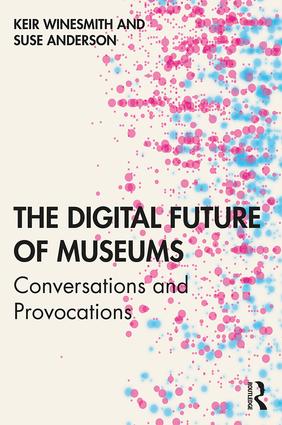In March 2020, Dr. Suse Anderson and I published The Digital Future of Museums: Conversations and Provocations through Routledge in the U.K. You can now purchase it online and, as you’re reading this on my website, here’s a 20% discount code HSM20 for the above link.
A few things happened during the development of the book that could be helpful to other writers, especially those writing about technology and it’s role in society and culture.
- To ensure readers are always able to find all our references, many of which were online, we used The Internet Archive’s Wayback Machine to ensure every citation was archived at least once. We explain how to use it in the book’s front matter.
- To support a granular online conversation, we suggested a book-wide hashtag #DFMBook and a pattern for each chapter e.g. Conversation #1: Seph Rodney + Robert J. Stein could use the hashtag #DFMBook1. We realise that our readers will use whatever platforms they choose and whatever tags (or lack thereof) that appeal to them. If they’d like their thoughts and criticisms to be found by those who don’t already follow them, or to appear outside the platform bubble they’ve been algorithmically assigned, we encourage readers to use these tags.
- For the front cover we approached the San Francisco based visualisation and analytics design firm Stamen Design, with whom I have worked in the past. Using publicly available collection APIs from the San Francisco Museum of Modern Art and M+, I created a dataset that they then visualised for the cover…which is gorgeous. I’ll write this process up properly in the coming weeks.
- Country Johnston, Executive Director of Te Papa (national museum of New Zealand) wrote a lovely preface which she has kindly opened sourced; find it here.
- We created a topic list for each the interview chapters. This was then mapped using the Graph Commons platform first, please check out the interactive map of #DFMBook chapters and topics. The map was used develop a series of topics relevance diagrams by the graphic designer Christie Fearns and I. These diagrams or visualisations lead each of 12 conversational chapters in the book. I’ve written up the process here.
If you have any questions about the book, please use the contact page or get in touch on ResearchGate/Twitter/LinkedIn.
